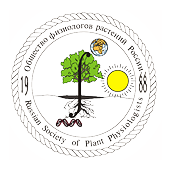Новости науки и практики // Март 2022

Progressive maturation of the root apical meristem in Arabidopsis thaliana lateral roots
Berthet er al. characterize the de novo establishment of the root apical meristem in lateral roots. While the position of the new stem cell niche is set early during morphogenesis, its cellular layout, unique gene expression profile and mitotic quiescence are only acquired after emergence concomitant to the establishment of two diverging growth axis. Their results show that the intertwined attributes of the mature root stem cell niche are progressively acquired during lateral root formation, and support a model in which the position of the stem cell niche emerges from the establishment of diverging growth axis.
Ecosystem consequences of introducing plant growth promoting rhizobacteria to managed systems and potential legacy effects
Moore et al. highlight new research directions to elucidate how introduced plant growth-promoting rhizobacteria impact resident microbiomes and ecosystem functions and their capacity for legacy effects.
Structural organization of the spongy mesophyll
Using micro-computed tomography imaging, topological analysis, and a comparative physiological framework, Borsuk et al. examined the structure of the spongy mesophyll in 40 species from 30 genera with laminar leaves and reticulate venation.
Water‐related innovations in land plants evolved by different patterns of gene cooption and novelty
Bowles et al. show that novel genes in the first land plants led to the single origin of stomata, but the stomatal closure of seed plants resulted from later gene expansions. By contrast, the major mechanism leading to the origin of vascular tissue was cooption of genes that emerged in the first land plants, enabling continuous water transport throughout the ancestral vascular plant. In turn, new key genes in the ancestors of plants with true leaves and seed plants led to the emergence of roots and lateral roots.
Plant-microbe interactions in the apoplast: Communication at the plant cell wall
Dora et al. discuss crucial processes occurring at the plant cell wall during the contact and communication between microbe and plant. They argue that these local and dynamic changes need to be considered to fully understand plant-microbe interactions.
Dynamic apico-basal enrichment of the F-actin during cytokinesis in Arabidopsis cells embedded in their tissues
Lebecq et al. used a root tracking system to image the spatio-temporal dynamics of both F-actin reporters and cell division markers in dividing cells embedded in their tissues. In addition to the F-actin accumulation at the phragmoplast, they observed and quantified a dynamic apico-basal enrichment of F-actin from the prophase/metaphase transition until the end of the cytokinesis.
Ca2+ signaling in plant responses to abiotic stresses
Dong et al. focus on salt/osmotic stress and responses to altered nutrient availability as model cases to detail novel insights into the identity of components that link stress perception to Ca2+ signal formation as well as on new insights into mechanisms of Ca2+ signal implementation.
Scientists reveal how Venus fly trap plants snap shut
The mechanosensitive ion channel is related to channels found in variety of other organisms.
https://www.sciencedaily.com/
Plant smoke detectors evolve as hormone sensors
Proteins discovered as 'smoke detectors' in plants that depend on fire exposure for germination have been adapted as strigolactone hormone detectors in other plants, researchers found.
https://www.sciencedaily.com/
What does cyanobacteria look for in a good moss host?
Cyanobacteria can provide an important source of nitrogen for mosses, but some mosses are better at attracting them than others.
How ancient plants 'learnt' to use water when they moved on to land – new research
In our recent paper, published in New Phytologist, we investigate, at the genetic level, how plants have learnt to use and manipulate water – from the first tiny moss-like plants to live on land in the Cambrian period (around 500 million years ago) through to the giant trees forming complex forest ecosystems of today.
Клетка читает гены петлями
Активные гены выпетливаются из хромосом, чтобы их последовательность можно было прочесть.
https://www.nkj.ru/news/43483/
Deep roots and many branches: Origins of plant-specialized metabolic enzymes in general metabolism
Collectively, plants produce hundreds of thousands of specialized metabolites from simple building blocks such as amino acids, fatty acids, and isoprenoids. As additional specialized metabolic enzymes are described, there is increasing recognition of the importance of cooption of general metabolic enzymes to specialized metabolism by gene duplication, narrowing of expression, and alteration of enzymatic activities.
https://www.sciencedirect.com/
The shikimate pathway regulates programmed cell death
Programmed cell death (PCD) is essential for both plant development and stress responses including immunity. However, how plants control PCD is not well understood. The shikimate pathway is one of the most important metabolic pathways in plants, but its relationship to PCD is unknown. Here we show that the shikimate pathway promotes PCD in Arabidopsis. We identify a photoperiod-dependent lesion mimic mutant named lis, which forms spontaneous lesions in short-day conditions.
https://www.sciencedirect.com/
Новости
Новости науки и практики // Апрель 2024
Обзор научных новостей, опубликованных во всемирной паутине за последний месяцФосфорилирование плазматической мембраны H+-АТФазы Thr881 (треонин) участвует в светоиндуцированном открывании устьиц
Ученые из Университета Нагои (Nagoya University) и Института трансформирующих биомолекул (WPI-ITbM) обнаружили новый ...Научная конференция «Photosynthesis and Hydrogen Energy Research for Sustainability – 2024»
Приглашаем Вас принять участие в XII международной научной конференции


Объявления
Записей не найдено.



